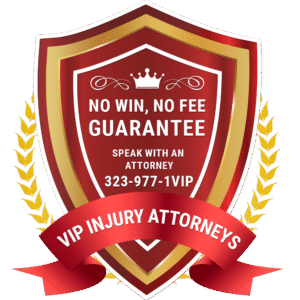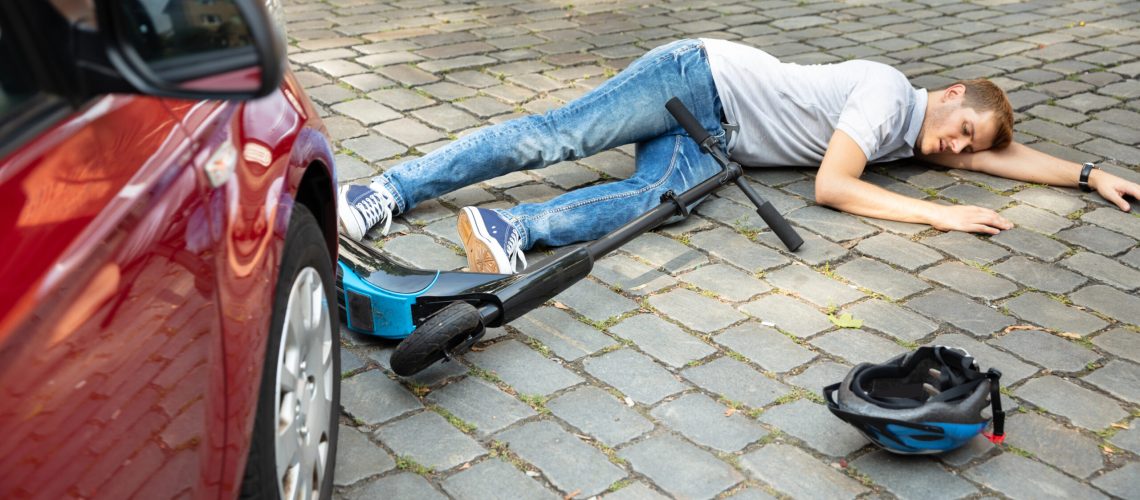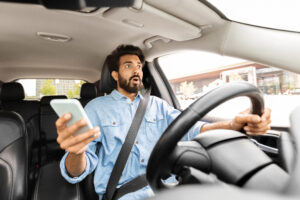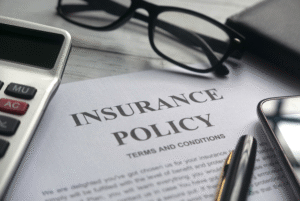Los Angeles streets have transformed dramatically over the past few years. Where once you might have seen only cars, buses, and traditional bicycles, now electric scooters and e-bikes zip through traffic lanes, bike paths, and sidewalks throughout the city. From Santa Monica’s beachfront to downtown LA’s bustling business district, these electric vehicles have become as common as coffee shops on every corner.
But with this micromobility revolution comes a troubling reality: accidents involving electric scooters and e-bikes are skyrocketing across Los Angeles County. What seemed like a convenient, eco-friendly transportation solution has created new dangers for riders, pedestrians, and motorists alike. If you’ve been injured in an e-scooter or e-bike accident, understanding your legal rights could mean the difference between facing overwhelming medical bills alone and securing the compensation you need to recover.
The E-Scooter and E-Bike Explosion in Los Angeles
The statistics tell a compelling story about how quickly these electric vehicles have taken over LA streets. Companies like Bird, Lime, Spin, and Jump flooded the city with thousands of shared e-scooters starting in 2017. Meanwhile, e-bike sales have surged as Californians seek alternatives to traffic-clogged freeways and expensive gas prices.
The COVID-19 pandemic accelerated this trend even further. As people sought socially distanced transportation options, e-bike purchases increased by over 145% in 2020 alone. Los Angeles now hosts one of the largest micromobility ecosystems in the United States, with tens of thousands of electric scooters and bikes operating across the metropolitan area.
However, this rapid adoption has outpaced safety infrastructure and public education. Many riders don’t understand California’s specific laws governing these vehicles, and the city’s infrastructure hasn’t fully adapted to accommodate the mix of traditional vehicles, electric scooters, e-bikes, and pedestrians sharing the same spaces.
Understanding California’s Electric Vehicle Laws
California law treats electric scooters and e-bikes differently than traditional bicycles or motor vehicles, creating a complex legal landscape that affects liability and compensation in accidents. Understanding these distinctions is crucial for anyone involved in an e-scooter or e-bike crash.
Electric Scooter Regulations in California
Under California Vehicle Code Section 21235, electric scooters are defined as devices with handlebars, a floorboard designed to be stood upon while riding, and an electric motor. The law establishes specific requirements for legal operation:
Electric scooters cannot exceed 15 miles per hour on level ground. Riders must be at least 16 years old and possess a valid driver’s license or instruction permit. While helmet requirements vary by city, California state law requires helmets for riders under 18 years old.
Most importantly for accident cases, electric scooters are generally prohibited from operating on sidewalks and must use bike lanes where available. When bike lanes aren’t present, riders should use the roadway as close to the right curb as safely possible. These rules create specific liability frameworks when accidents occur in prohibited areas.
E-Bike Classifications and Rules
California recognizes three classes of electric bicycles, each with different regulations that can impact accident liability:
Class 1 E-Bikes feature pedal-assist only, with no throttle, and assistance that stops at 20 mph. These bikes can operate anywhere traditional bicycles are allowed, including most bike paths and lanes.
Class 2 E-Bikes may have a throttle and also stop assisting at 20 mph. They face some restrictions on certain bike paths but generally follow similar rules to Class 1 bikes.
Class 3 E-Bikes provide pedal assistance up to 28 mph and face more restrictions. They’re prohibited from bike paths unless local authorities specifically allow them, and riders under 18 must wear helmets.
These classifications matter significantly in accident cases because operating an e-bike in a prohibited area can affect fault determination and potential compensation.
Common E-Scooter and E-Bike Accident Scenarios in Los Angeles
The unique characteristics of Los Angeles—from its sprawling layout to its heavy traffic—create specific accident patterns involving electric scooters and bikes. Understanding these common scenarios helps illustrate where liability typically falls and what compensation might be available.
Intersection Collisions
Many e-scooter and e-bike accidents occur at intersections, particularly where bike lanes cross vehicle traffic. Los Angeles intersections like those along Venice Boulevard, Spring Street, and Sunset Boulevard see frequent conflicts between electric vehicles and cars. These accidents often happen when drivers fail to yield to e-scooter or e-bike riders who have the right-of-way, or when riders enter intersections against traffic signals.
The severity of intersection collisions tends to be high because both the vehicle and electric scooter or bike are often moving at significant speeds. Riders may suffer serious injuries including broken bones, traumatic brain injuries, and road rash requiring extensive medical treatment.
Door Zone Accidents
Parked car door incidents represent another common accident type in dense urban areas like Hollywood, West Hollywood, and downtown LA. When drivers or passengers open car doors without checking for approaching e-scooter or e-bike riders, the results can be catastrophic. Riders struck by opening doors often suffer severe injuries from both the initial impact and subsequent fall into traffic.
California law requires motorists to check for approaching traffic before opening doors, making liability relatively clear in these cases. However, riders also have responsibilities to maintain safe distances from parked cars when possible.
Sidewalk and Pedestrian Conflicts
Despite prohibitions against sidewalk riding in most areas, many e-scooter riders operate on sidewalks, creating conflicts with pedestrians. These accidents can result in injuries to both the rider and pedestrians, with liability questions depending on whether the e-scooter was operating legally.
Los Angeles has seen numerous incidents where e-scooter riders colliding with pedestrians have caused serious injuries, particularly to elderly pedestrians who may be more vulnerable to fall-related injuries.
Multi-Vehicle Accidents
The most complex e-scooter and e-bike accidents involve multiple vehicles. These might include scenarios where a car strikes an e-scooter rider, causing the rider to collide with a cyclist, or situations where an e-bike rider swerves to avoid one hazard and creates another accident. Determining liability in multi-vehicle accidents requires careful investigation and often involves multiple insurance companies.
Who's Liable When E-Scooter and E-Bike Accidents Happen?
Liability in electric scooter and e-bike accidents depends on numerous factors, including who was operating the vehicle, whether traffic laws were followed, road conditions, and equipment malfunctions. Understanding potential liable parties helps accident victims know where to seek compensation.
Driver Liability
When motor vehicle drivers cause accidents with e-scooter or e-bike riders, standard negligence principles apply. Drivers have duties to exercise reasonable care, follow traffic laws, and watch for all types of vehicles sharing the road. Common forms of driver negligence in these accidents include:
Failing to yield right-of-way to riders in bike lanes or at intersections represents one of the most frequent causes of serious e-scooter and e-bike accidents. Drivers making right turns often don’t check bike lanes, causing devastating right-hook collisions.
Distracted driving—particularly texting or phone use—contributes to many accidents involving electric vehicles. Because e-scooters and e-bikes are smaller and quieter than cars, they require drivers’ full attention to notice and avoid.
Following too closely or aggressive driving behaviors like speeding, running red lights, or failing to maintain safe distances create dangerous conditions for vulnerable road users like e-scooter and e-bike riders.
Rider Responsibility and Contributory Negligence
E-scooter and e-bike riders also have legal obligations that can affect liability and compensation. California follows a “pure comparative negligence” rule, meaning that a rider’s compensation may be reduced by their percentage of fault in an accident.
Riders who violate traffic laws—such as riding on prohibited sidewalks, operating without required equipment, or failing to follow right-of-way rules—may bear partial responsibility for accidents. However, even riders who contribute to accidents can still recover compensation reduced by their percentage of fault.
For example, if an e-scooter rider suffers $100,000 in damages but is found 20% at fault for riding in a prohibited area, they could still recover $80,000 from the primarily at-fault driver.
Scooter and Bike Company Liability
Shared e-scooter companies like Bird and Lime typically require users to agree to terms of service that attempt to limit company liability. However, these companies can still face liability in certain circumstances:
Equipment malfunctions causing accidents may create company liability if the malfunction resulted from inadequate maintenance, defective design, or failure to conduct proper safety inspections. California requires shared e-scooter companies to maintain their fleets in safe operating condition.
Inadequate user education about local traffic laws and safety requirements could potentially create liability if accidents result from riders not understanding legal operation requirements.
However, these companies often have substantial legal resources and carefully structured liability limitation strategies, making these claims complex to pursue.
Municipal and Infrastructure Liability
Cities and counties may bear liability for e-scooter and e-bike accidents when dangerous road conditions contribute to crashes. Poorly maintained bike lanes, inadequate signage, dangerous intersections, or debris in roadways can create municipal liability.
However, claims against government entities involve special procedural requirements, including shorter deadlines for filing claims and specific notice requirements that must be followed precisely.
Insurance Complications in E-Scooter and E-Bike Accidents
One of the most challenging aspects of e-scooter and e-bike accidents involves insurance coverage. Traditional auto insurance policies often don’t clearly address these vehicles, creating gaps in coverage that can leave accident victims struggling to pay medical bills and other expenses.
Auto Insurance Coverage Issues
Most personal auto insurance policies include coverage for accidents involving the policyholder while operating or occupying a motor vehicle. However, e-scooters and e-bikes typically don’t qualify as motor vehicles under insurance policy definitions, creating potential coverage gaps.
If you’re injured by a motor vehicle while riding an e-scooter or e-bike, the at-fault driver’s liability insurance should provide coverage. However, if the driver is uninsured or underinsured, your own auto policy’s UM/UIM coverage might not apply to your e-scooter or e-bike injuries.
Some insurance companies have begun offering specific coverage for electric vehicles, but adoption remains limited. Riders should check with their insurance agents about coverage options for e-scooter and e-bike use.
Health Insurance Considerations
Most health insurance policies will cover medical treatment for e-scooter and e-bike accident injuries regardless of fault. However, health insurance often involves deductibles, co-pays, and coverage limitations that can create significant out-of-pocket expenses for accident victims.
Health insurance companies also typically assert subrogation rights, meaning they may seek reimbursement from liability settlements or judgments. Understanding these subrogation obligations is important for maximizing net recovery from accident claims.
Homeowner’s and Renter’s Insurance
Some homeowner’s and renter’s insurance policies include personal liability coverage that might apply to accidents where you injure others while riding an e-scooter or e-bike. However, coverage varies significantly between policies and insurance companies.
What to Do After an E-Scooter or E-Bike Accident
The immediate steps you take following an e-scooter or e-bike accident can significantly impact your health, safety, and legal rights. Understanding the proper response helps protect both your well-being and your ability to seek compensation.
Immediate Safety and Medical Concerns
Your first priority should always be safety and medical care. Move to safety if possible, but don’t attempt to move if you suspect serious injuries. E-scooter and e-bike accidents often cause head injuries, broken bones, and road rash that may not be immediately apparent due to adrenaline.
Call 911 even for seemingly minor accidents. Police reports provide crucial documentation for insurance claims and legal proceedings. Emergency medical evaluation helps identify injuries that might not be immediately obvious and creates important medical records documenting the connection between the accident and your injuries.
Many accident victims attempt to minimize their injuries or decline medical treatment at the scene, only to discover serious problems hours or days later. Having immediate medical documentation helps establish the accident as the cause of your injuries.
Evidence Collection
If you’re physically able, collecting evidence at the accident scene can be crucial for your case. Use your phone to photograph vehicle damage, road conditions, traffic signs, and your injuries. Take pictures from multiple angles and include wider shots that show the overall accident scene.
Get contact information from all involved parties, including drivers, other riders, and witnesses. Police reports often don’t include witness statements, so collecting this information yourself ensures you can follow up later if needed.
Note specific details about how the accident happened while your memory is fresh. Write down or record voice notes about weather conditions, lighting, traffic patterns, and any unusual circumstances that contributed to the accident.
Dealing with Insurance Companies
Contact your insurance company to report the accident, even if you weren’t at fault. Many policies require prompt accident reporting regardless of fault, and delays in reporting can affect coverage.
However, be cautious when speaking with other parties’ insurance companies. Insurance adjusters often contact accident victims quickly, seeking recorded statements that can later be used to minimize claims. Consider consulting with an attorney before providing detailed statements to other parties’ insurers.
Keep detailed records of all communications with insurance companies, including dates, times, and the content of conversations. Request copies of all documents and correspondence related to your claim.
Understanding Your Compensation Rights
E-scooter and e-bike accident victims may be entitled to various types of compensation depending on their injuries, the circumstances of the accident, and available insurance coverage. Understanding these potential damages helps ensure you don’t settle for less than your case is worth.
Medical Expenses and Future Treatment
Compensation for medical expenses includes not only immediate treatment costs but also ongoing care requirements. E-scooter and e-bike accidents often cause injuries requiring extended treatment:
Emergency room visits, ambulance transportation, X-rays, CT scans, and other diagnostic imaging represent immediate medical costs that should be fully compensated. These expenses can easily reach thousands of dollars even for seemingly minor accidents.
Orthopedic treatment for broken bones, surgical procedures, and hospitalization costs can reach tens of thousands of dollars for serious accidents. Physical therapy, occupational therapy, and rehabilitation services often continue for months after the initial injury.
Some injuries may require future medical treatment, including additional surgeries, ongoing therapy, or medical equipment. Experienced personal injury attorneys work with medical experts to project these future costs and ensure they’re included in settlement demands.
Lost Income and Earning Capacity
If your injuries prevent you from working, you may be entitled to compensation for lost income. This includes not only wages missed during recovery but also lost earning capacity if your injuries affect your ability to work long-term.
Calculating lost income involves more than just multiplying your daily wage by days missed. It includes lost overtime opportunities, missed promotions, lost benefits, and reduced earning capacity if you cannot return to your previous type of work.
Self-employed individuals and freelancers face particular challenges documenting lost income, but compensation is still available. Tax returns, bank records, and client contracts can help establish earning patterns and calculate losses.
Pain and Suffering Damages
California law allows accident victims to recover compensation for pain and suffering, which includes both physical pain and emotional distress caused by injuries. These damages often represent the largest component of personal injury settlements.
Pain and suffering damages consider factors like the severity of injuries, duration of recovery, impact on daily activities, and long-term effects on quality of life. Traumatic brain injuries, which are common in e-scooter and e-bike accidents, often involve significant pain and suffering awards due to their life-altering effects.
Documenting pain and suffering requires more than just medical records. Keeping a daily journal of pain levels, activity limitations, and emotional impacts helps demonstrate how injuries affect your life beyond medical treatment.
When to Contact a Personal Injury Attorney
While not every e-scooter or e-bike accident requires legal representation, certain circumstances make attorney consultation essential for protecting your rights and maximizing compensation.
Serious Injuries
Any accident resulting in significant injuries should prompt immediate attorney consultation. This includes traumatic brain injuries, broken bones, injuries requiring surgery, or any condition likely to require ongoing medical treatment.
Head injuries are particularly concerning in e-scooter and e-bike accidents because riders often don’t wear helmets and these vehicles provide no protection in collisions. Even seemingly minor head impacts can cause concussions or traumatic brain injuries with long-term consequences.
Spinal injuries, including herniated discs, compressed vertebrae, or spinal cord damage, often have life-altering consequences that require experienced legal representation to ensure full compensation.
Disputed Liability
When insurance companies or other parties dispute who caused the accident, attorney representation becomes crucial. Insurance adjusters often attempt to shift blame to e-scooter or e-bike riders, arguing they were violating traffic laws or operating unsafely.
Accident reconstruction experts can analyze evidence to determine exactly how accidents occurred and who bears responsibility. These expert services typically require attorney coordination and funding, making early legal consultation important for preserving evidence.
Insurance Company Tactics
If insurance companies delay processing your claim, offer unreasonably low settlements, or request excessive documentation, attorney involvement often resolves these issues quickly. Insurance companies typically take claims more seriously when they know experienced legal counsel is involved.
Some insurance companies specifically target e-scooter and e-bike accident victims with quick, low-ball settlement offers, hoping to resolve claims before victims understand the full extent of their injuries and damages.
Multiple Parties Involved
Accidents involving multiple vehicles, shared e-scooter companies, government entities, or complex liability scenarios require experienced legal navigation. These cases often involve multiple insurance companies with competing interests and complex legal theories.
Fighting for Your Rights After an E-Scooter or E-Bike Accident
The rise of electric scooters and e-bikes in Los Angeles has created new transportation options but also new risks for serious accidents. Understanding your legal rights, California’s specific laws governing these vehicles, and the compensation available for injuries helps ensure you’re prepared if an accident affects your life.
At VIP Injury Attorneys, we’ve seen firsthand how e-scooter and e-bike accidents can turn lives upside down. Medical bills mount, work becomes impossible, and the future feels uncertain. But you don’t have to face this challenging time alone. Our experienced team understands the unique aspects of electric vehicle accidents and fights tirelessly to secure the compensation our clients deserve.
Remember, victory means getting you the treatment and compensation you need. Our integrity means no clownish commercials—just honest attorneys doing great work. And our passion drives us to change our clients’ lives through dedicated legal representation.
We offer a “No Win, No Fee” guarantee, so you don’t pay attorney fees unless we secure compensation for your case. Don’t settle for less than VIP treatment when dealing with the aftermath of an e-scooter or e-bike accident.
Take Action to Protect Your Rights
If you’ve been injured in an e-scooter or e-bike accident, time matters. Evidence disappears, witnesses forget details, and insurance companies work quickly to minimize their exposure. Contact VIP Injury Attorneys today for a free consultation, and let us take the legal fight off your shoulders while you focus on healing and rebuilding your life.
Contact us now to discuss your case and learn how we can help you secure the compensation you deserve. We’ll handle the legal battles while you concentrate on recovery.
Stay updated on important legal developments affecting electric vehicle safety by subscribing to our newsletter or following us on Facebook, YouTube, Instagram, and TikTok.





